Our Library
Explore our publications, from research papers and series to educational materials, covering all aspects of conflict transformation and peace promotion.
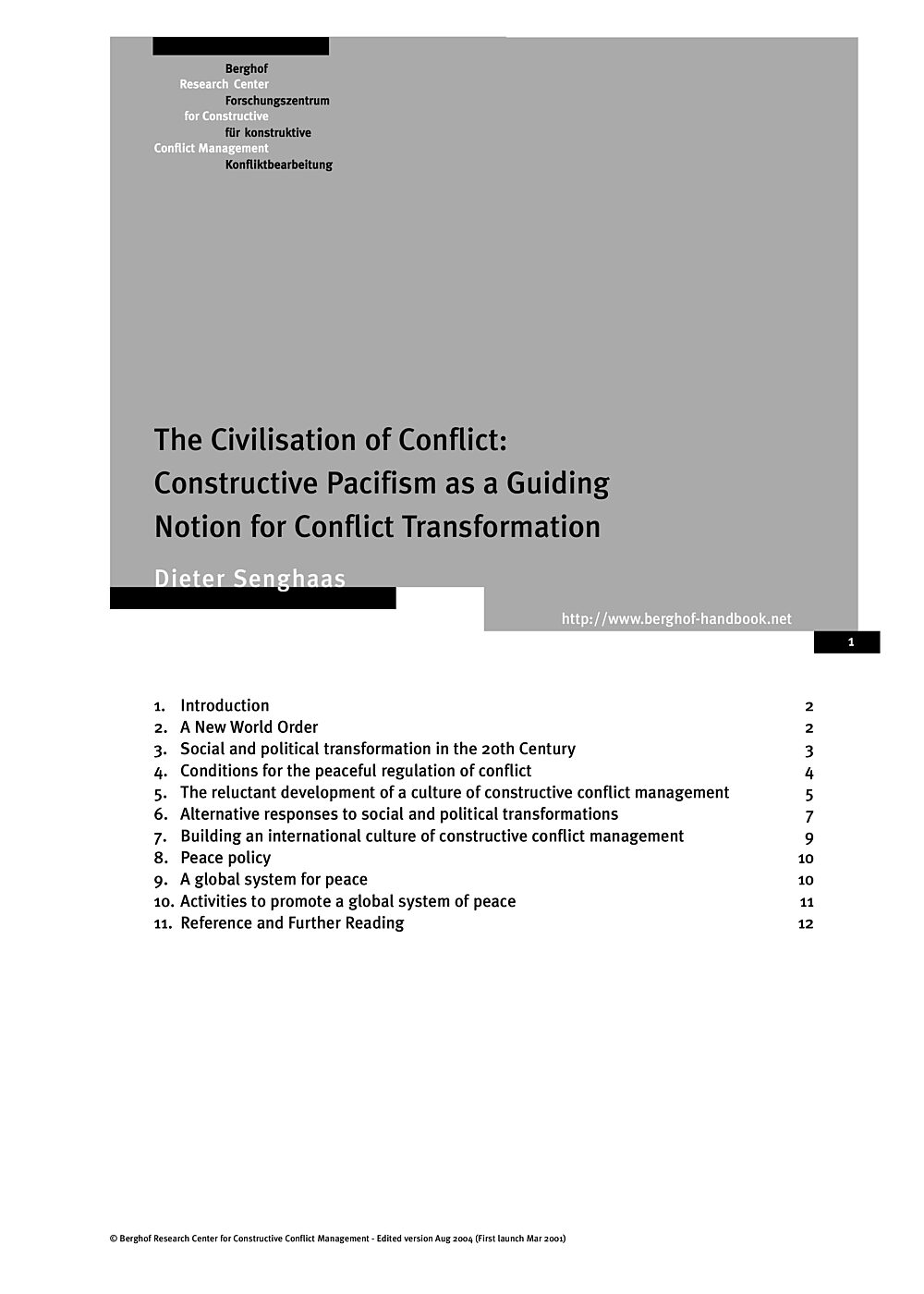
The Civilisation of Conflict: Constructive Pacifism as a Guiding Notion for Conflict TransformationHandbook Article
Discusses theoretical questions concerning the civilised management of conflicts. The author proposes that, if civil or international war is a result of anarchy, then it only can be addressed by a social order built at national, regional and international levels. The author presents a model of complex peace architecture, i.e. the "civilisational hexagon". (revised for 2004 print edition)
- Year2004
- Author(s)Dieter Senghaas
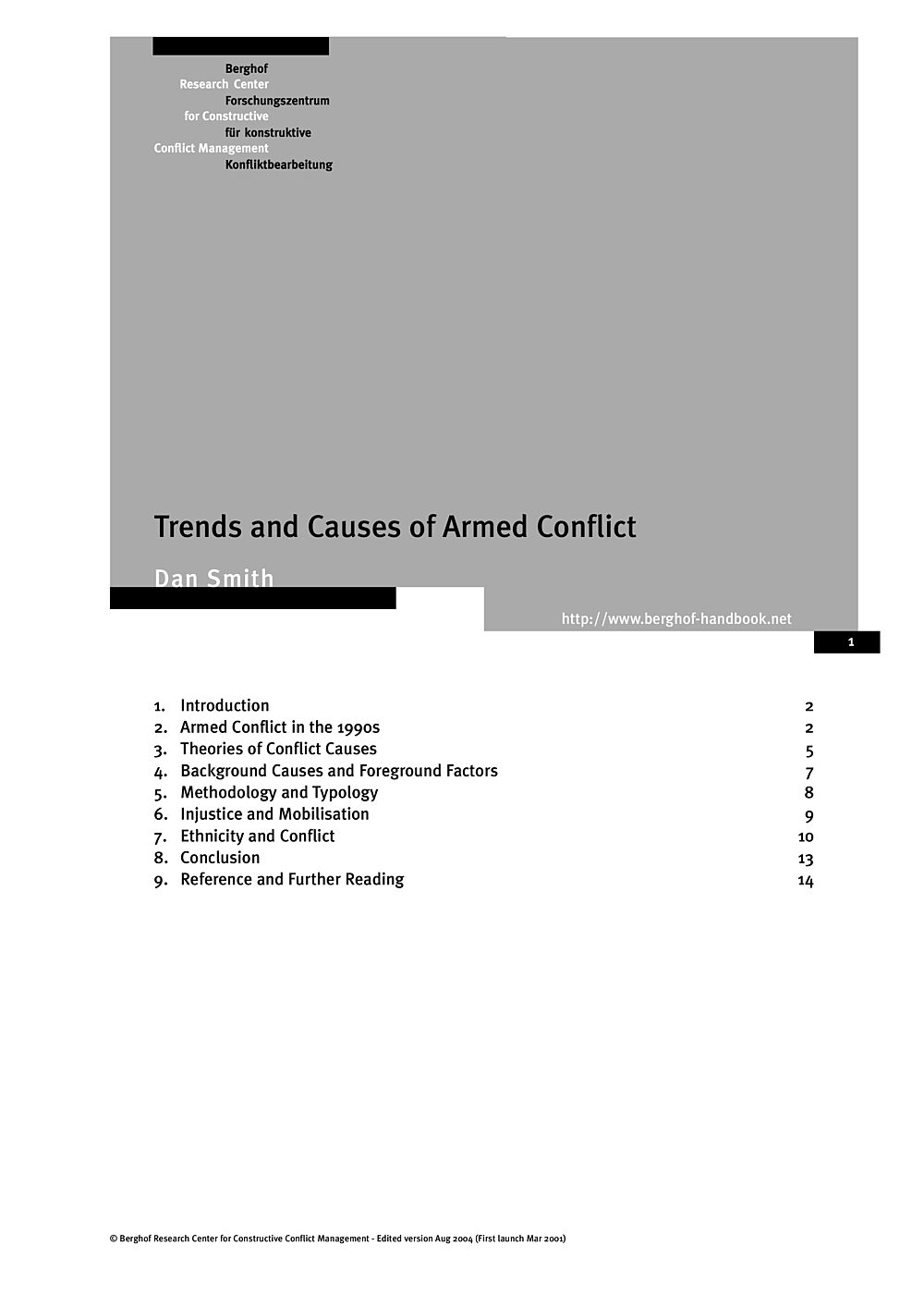
Trends and Causes of Armed ConflictHandbook Article
Gives an overview of current findings on causes of armed conflict, identifying injustice and mobilisation as key concepts. The author shares insights on where to look for signs of potential escalation, where to seek and how to utilise opportunities for preventing violent escalation. (revised for 2004 print edition)
- Year2004
- Author(s)Dan Smith
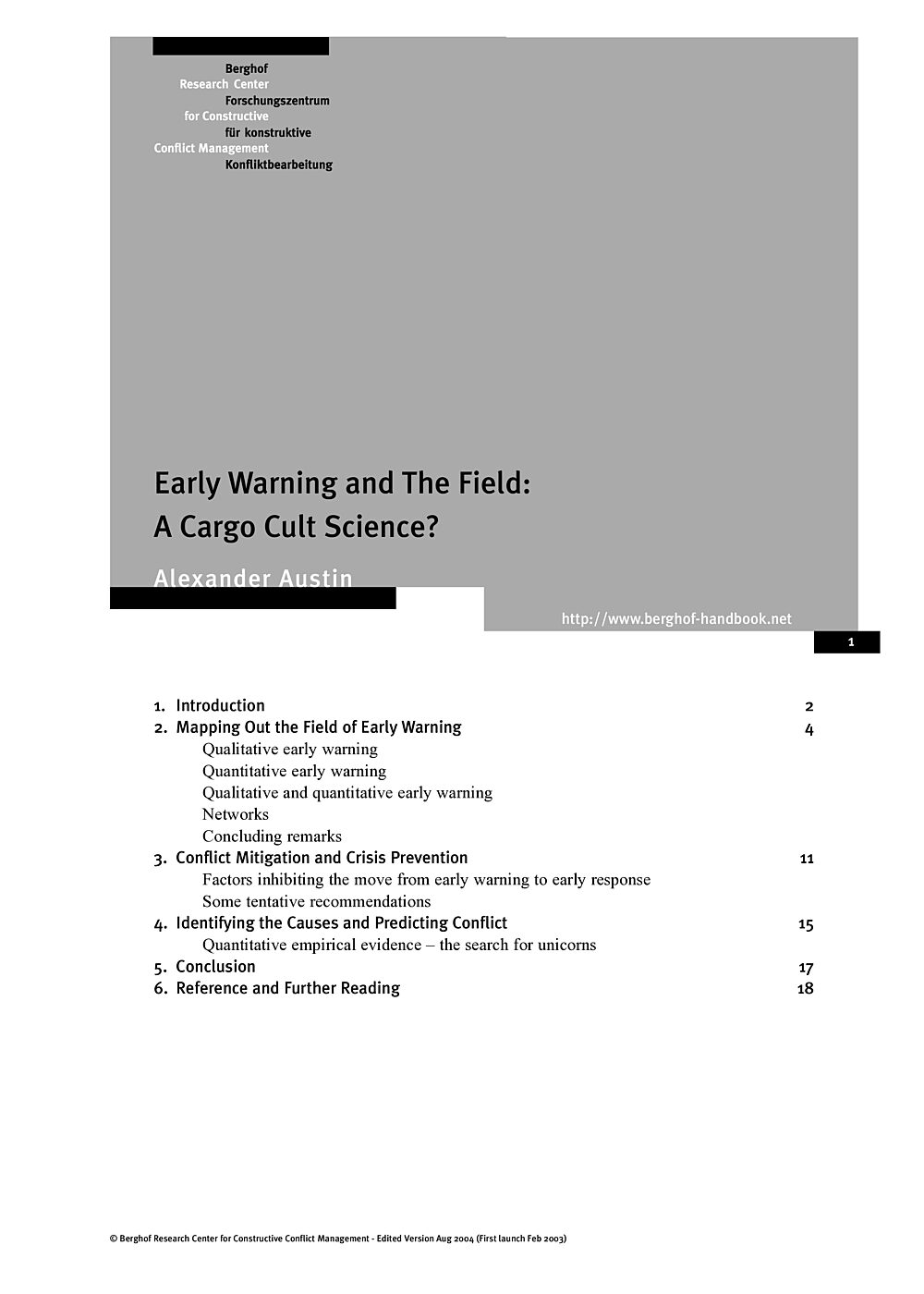
Early Warning and The Field: A Cargo Cult Science?Handbook Article
Introduces early warning activities and identifies different areas of focus, methodologies and mechanisms employed. The author discusses critically whether existing early warning systems can: a) identify the causes of conflict; b) predict the outbreak of conflict; and c) mitigate conflict. (revised for 2004 print edition)
- Year2004
- Author(s)Alex Austin
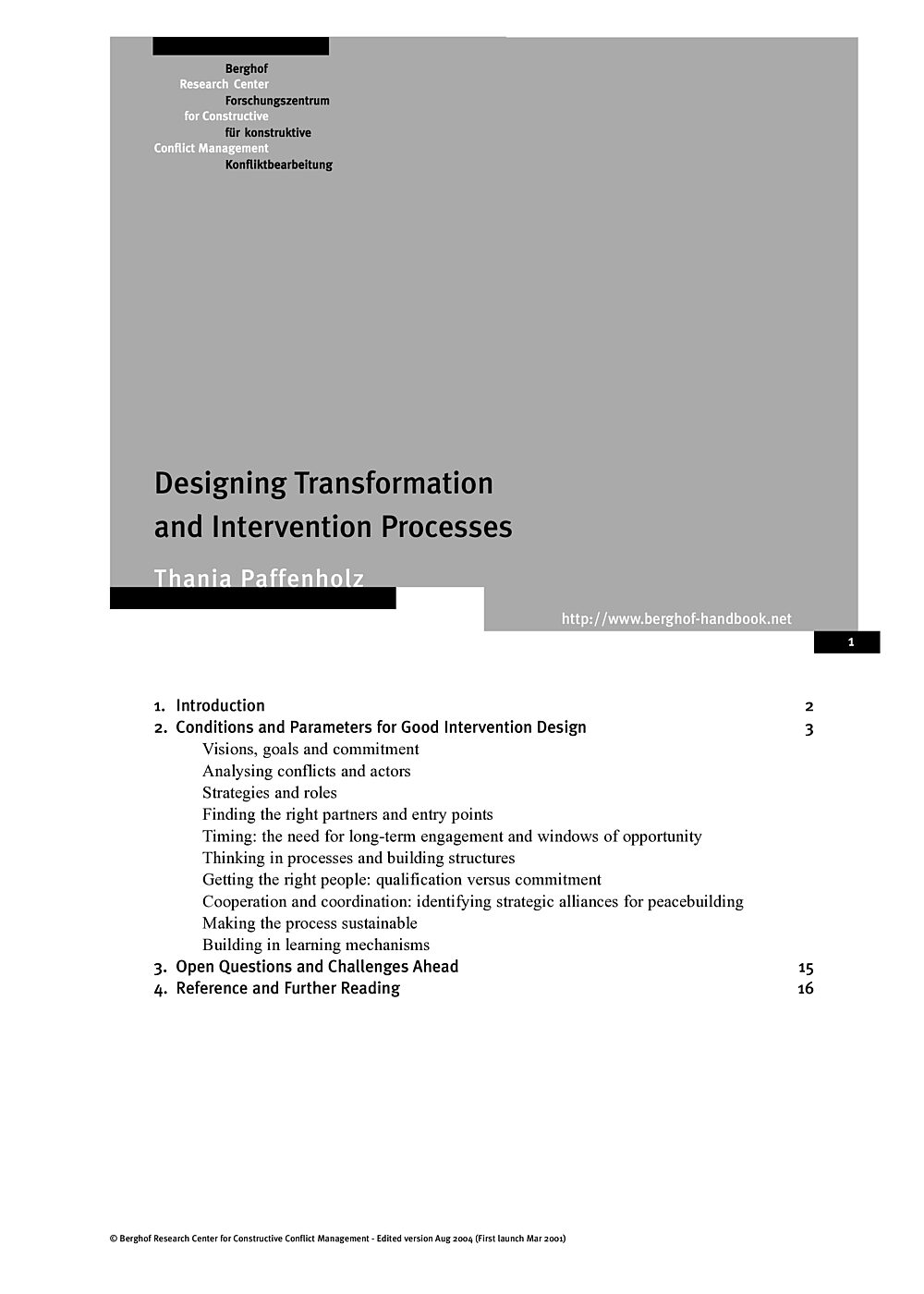
Designing Transformation and Intervention ProcessesHandbook Article
- Year2004
- Author(s)Thania Paffenholz
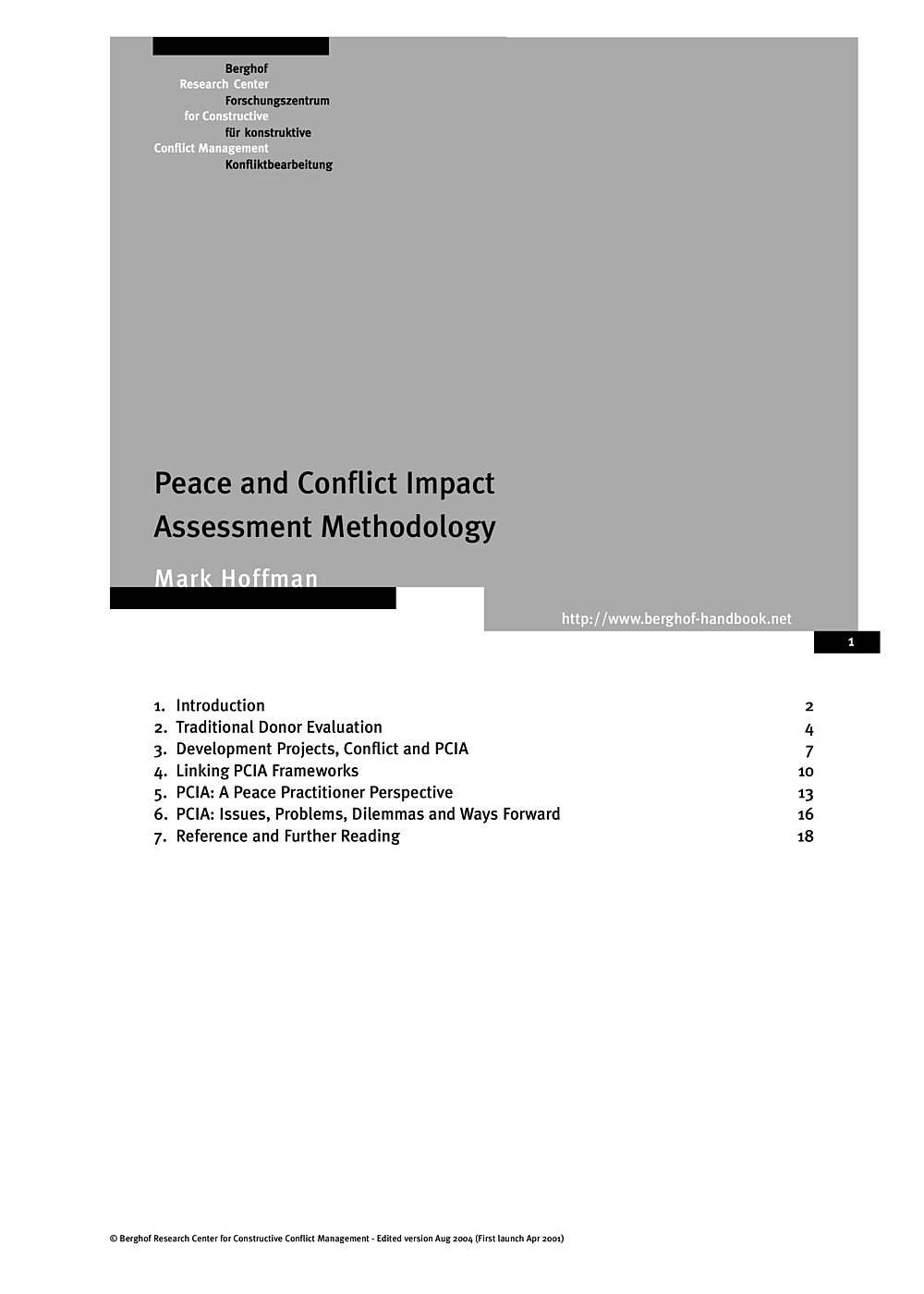
Peace and Conflict Impact Assessment MethodologyHandbook Article
Reviews the state of the art in evaluation, focusing on peace and conflict impact assessment (PCIA) methodology from three perspectives: traditional donor evaluations; assessment methodologies in development work; evaluations of conflict resolution and peacebuilding NGOs. (revised for 2004 print edition)
- Year2004
- Author(s)Mark Hoffman
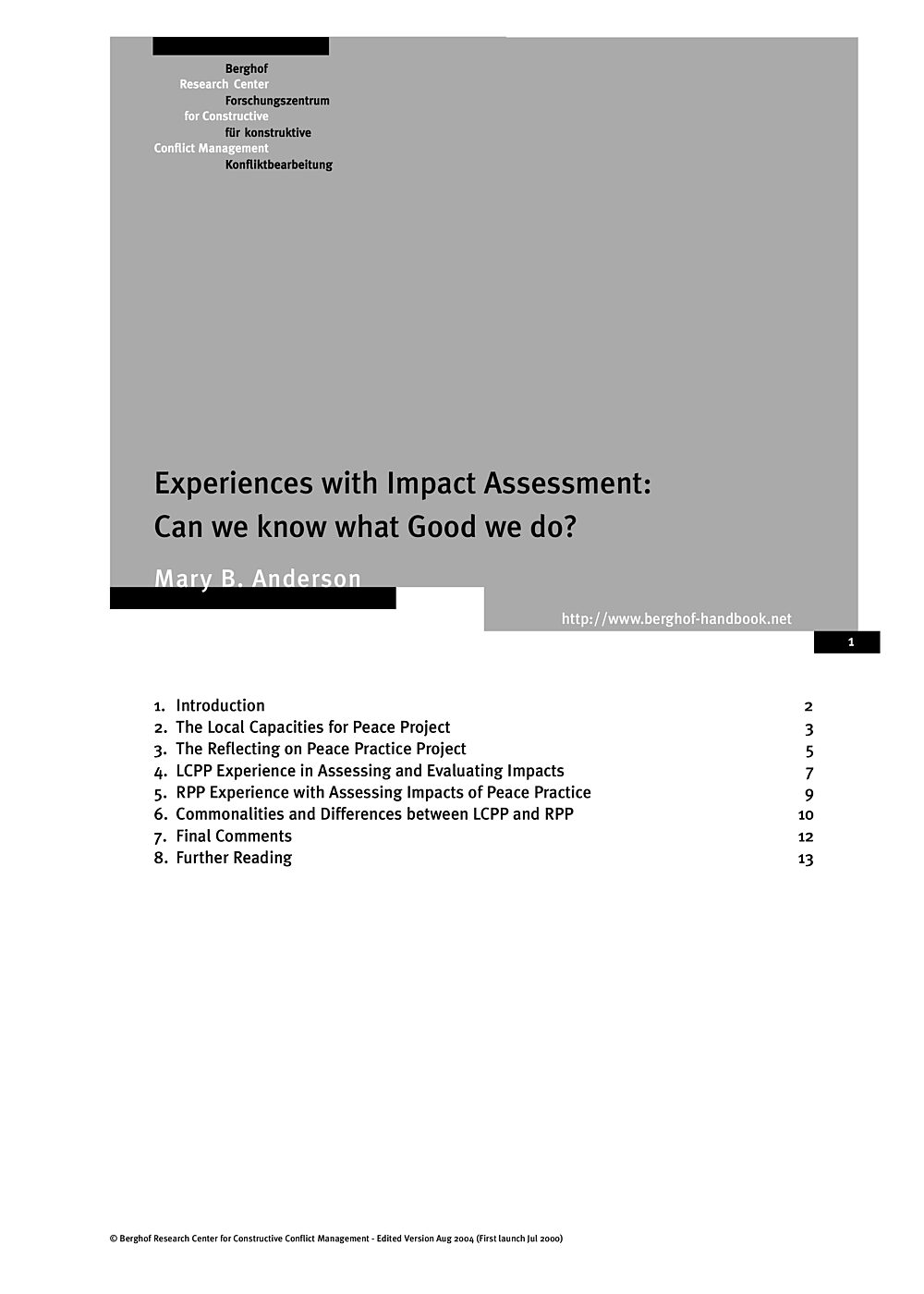
Experiences with Impact Assessment: Can We Know What Good We Do?Handbook Article
Considers how international agencies providing humanitarian assistance, development aid and/or support to peace processes can understand what their impacts are. The article builds on a collaborative learning project and identifies two major challenges: 1) selecting criteria or indicators for assessing progress; and 2) determining who or what particular outcomes can be attributed to. (revised for 2004 print edition)
- Year2004
- Author(s)Mary B. Anderson
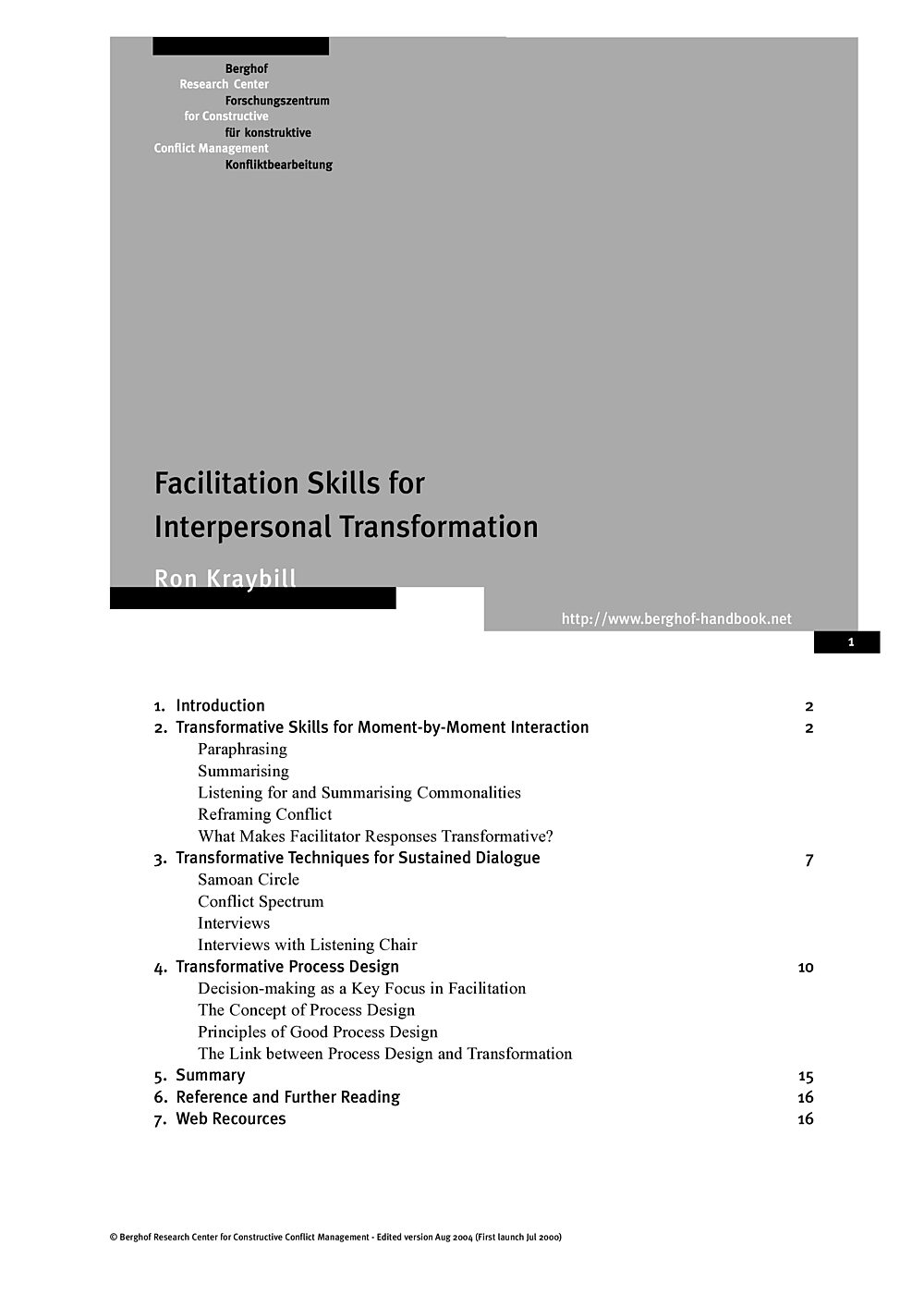
Facilitation Skills for Interpersonal TransformationHandbook Article
Describes the most important skills and tools facilitators need in order to enhance capacities at the individual and interpersonal level. The author presents: skills used in moment-by-moment interaction with parties; techniques for facilitating sustained dialogue; and principles of process design for addressing the larger institutional and structural realities of conflicts. (revised for 2004 print edition)
- Year2004
- Author(s)Ron Kraybill
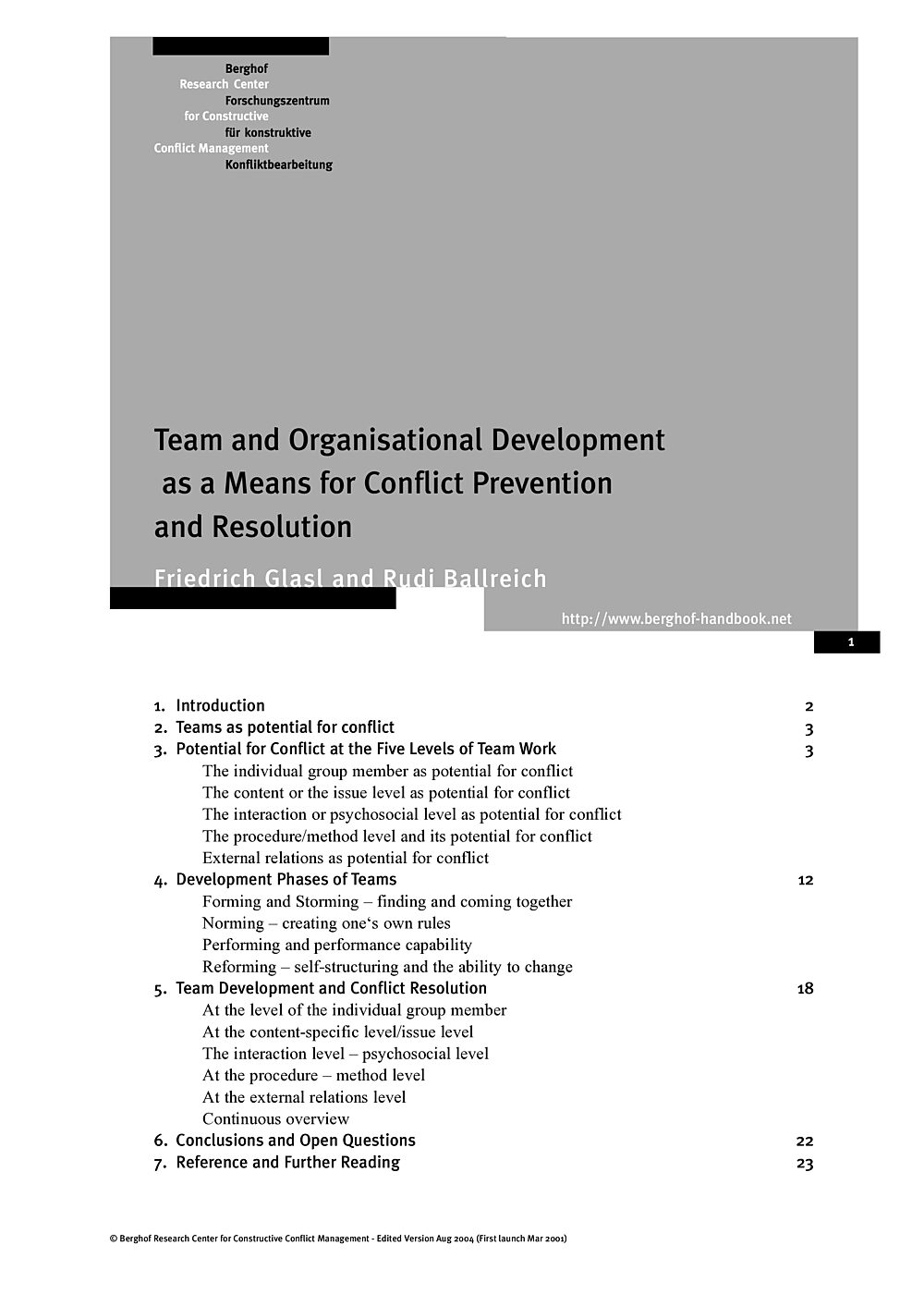
Team and Organisational Development as a Means for Conflict Prevention and ResolutionHandbook Article
Offers conflict transformation approaches for groups, teams and organisations. The authors identify five levels of cooperation within teams (i.e. the level of individual members, the content level, the interaction level, the procedural level and the level of external relations between the group and its environment) and offer suggestions for addressing conflict within teams at each level. (revised for 2004 print edition)
- Year2004
- Author(s)Friedrich Glasl, Rudi Ballreich
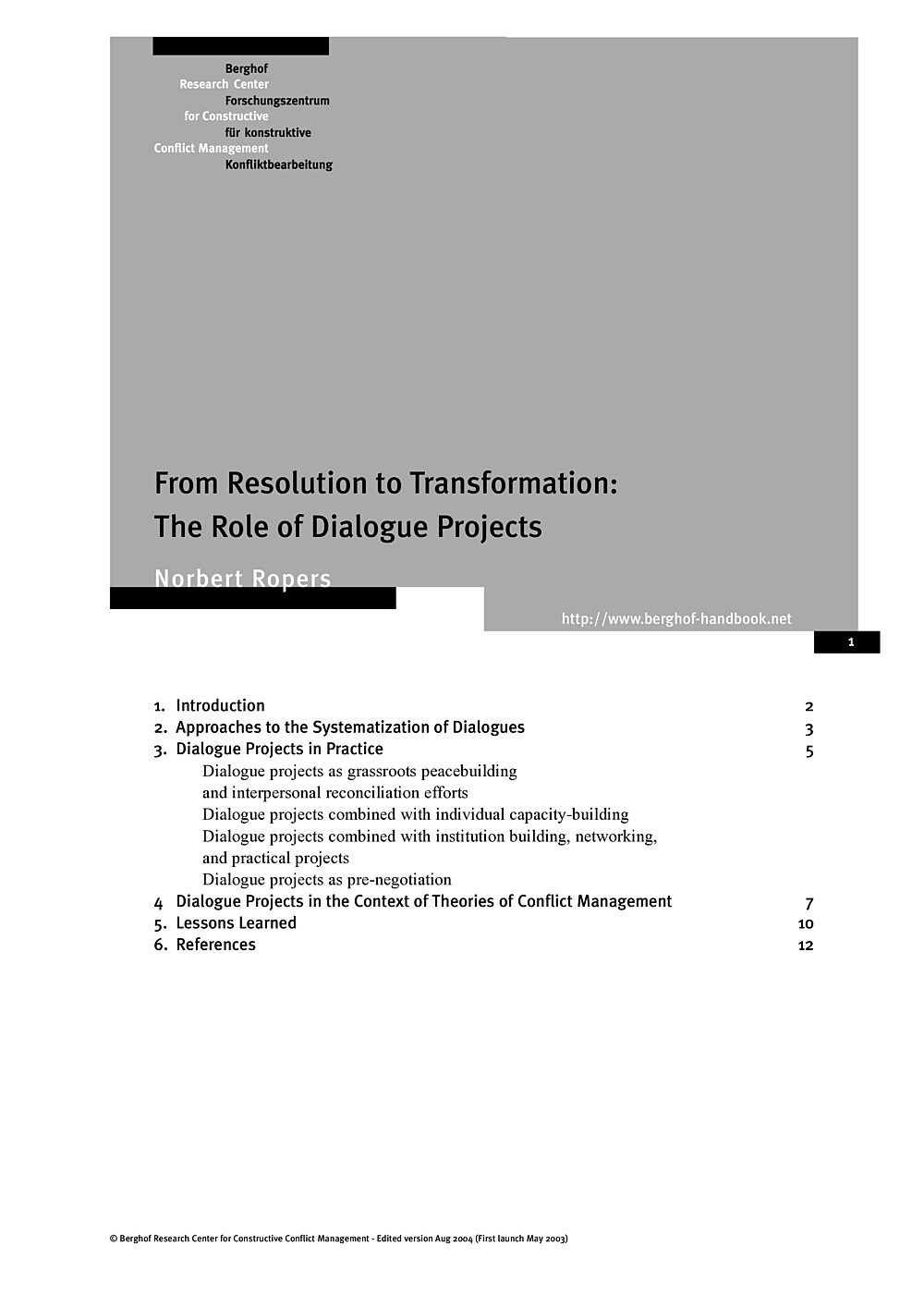
From Resolution to Transformation: The Role of Dialogue ProjectsHandbook Article
Presents dialogues as the classical means of constructively dealing with conflicts. The author gives an overview of ideal types and identifies the basic elements of most dialogue processes. He discusses dialogue in the context of various other approaches in order to establish criteria for measuring success. (revised for 2004 print edition)
- Year2004
- Author(s)Norbert Ropers
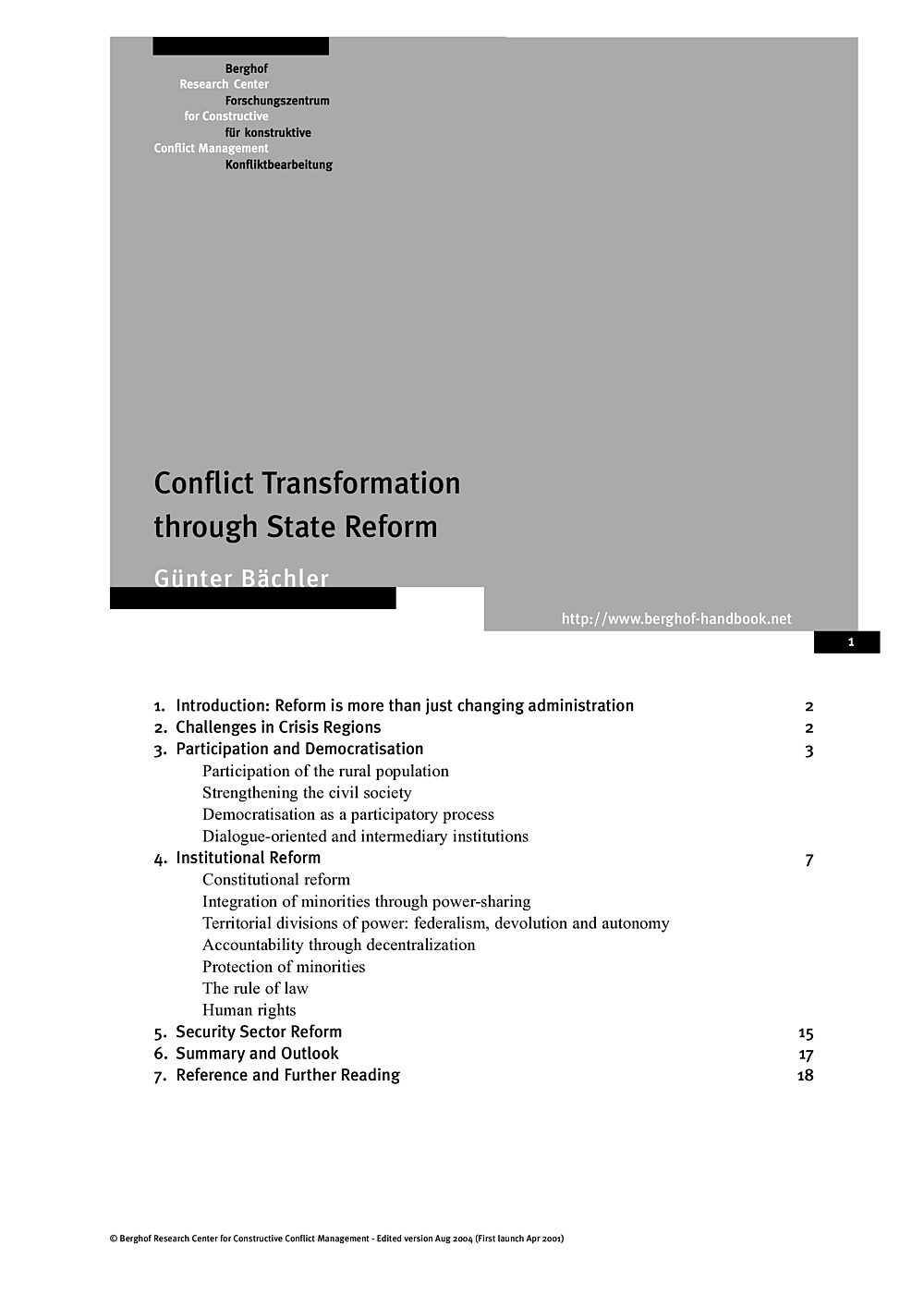
Conflict Transformation through State ReformHandbook Article
Explores the significance of state reform for transformation of war-torn areas. The author presents three strategic approaches: participatory strategies (i.e. democratisation, strengthening of civil society, dialogue); institution building and institutional reform (i.e. federalisation, decentralisation, constitutional and judicial reform); and security needs (i.e. human rights, human security). (revised for 2004 print edition)
- Year2004
- Author(s)Günter Bächler